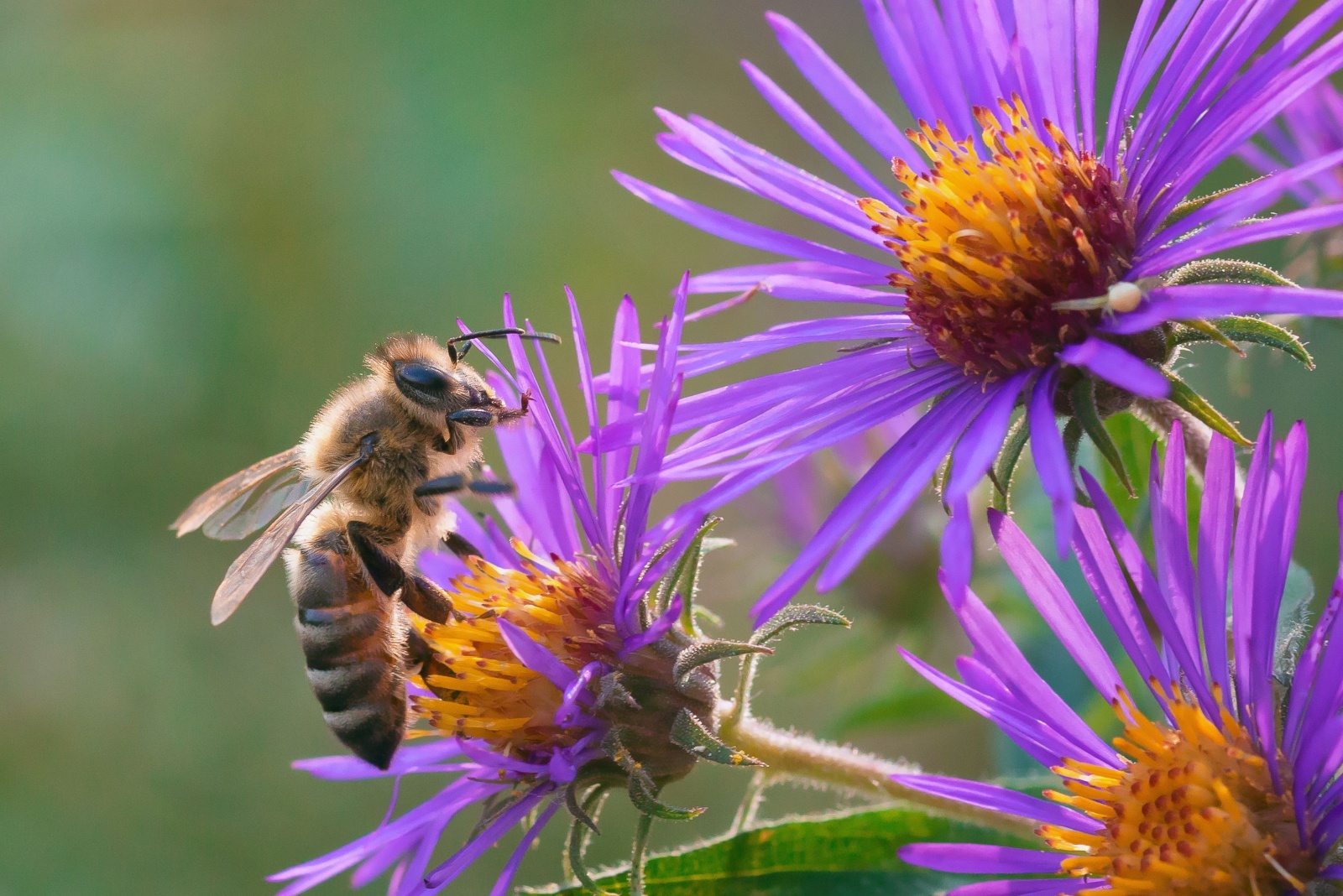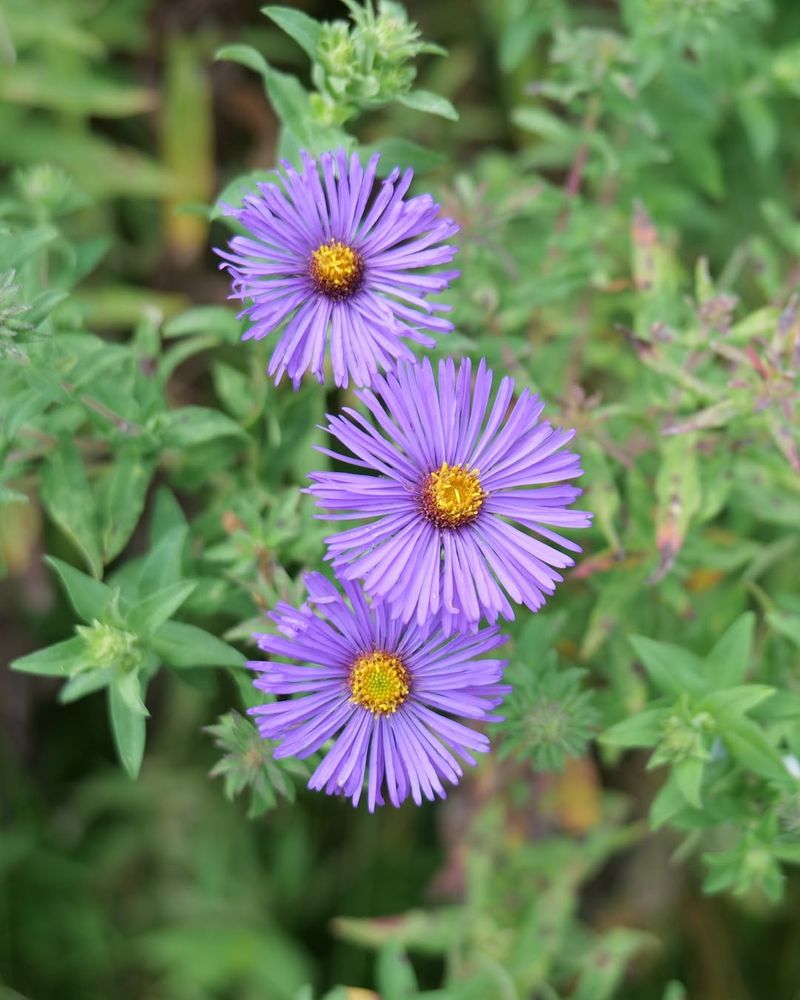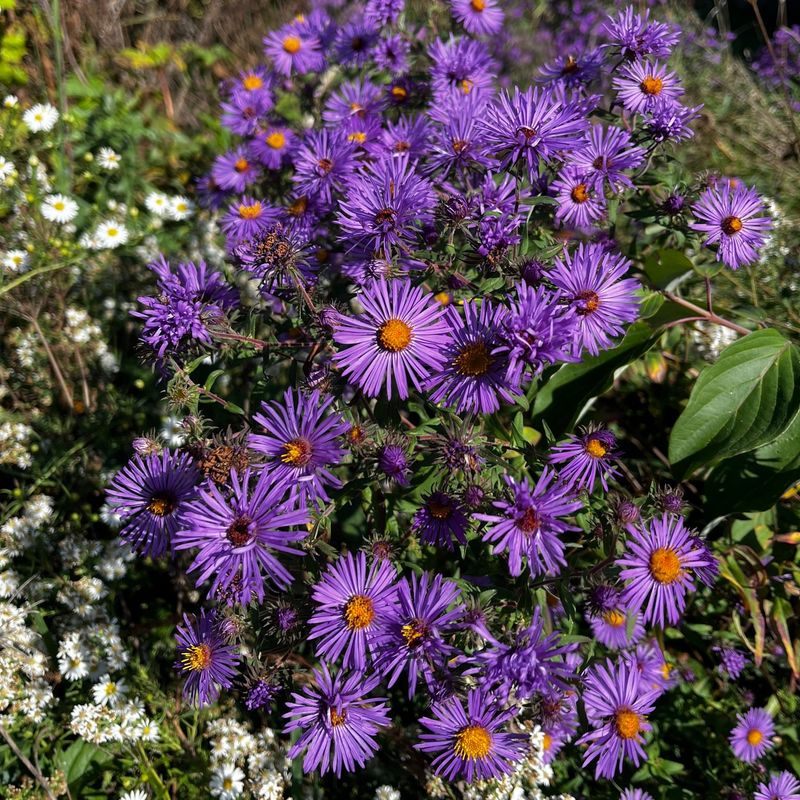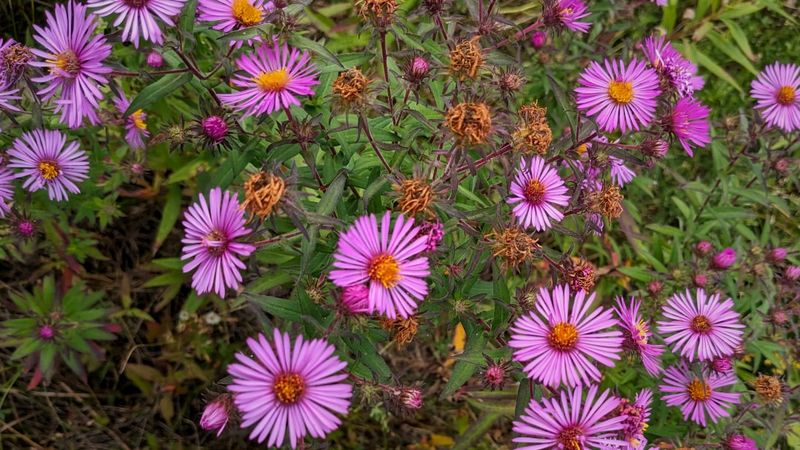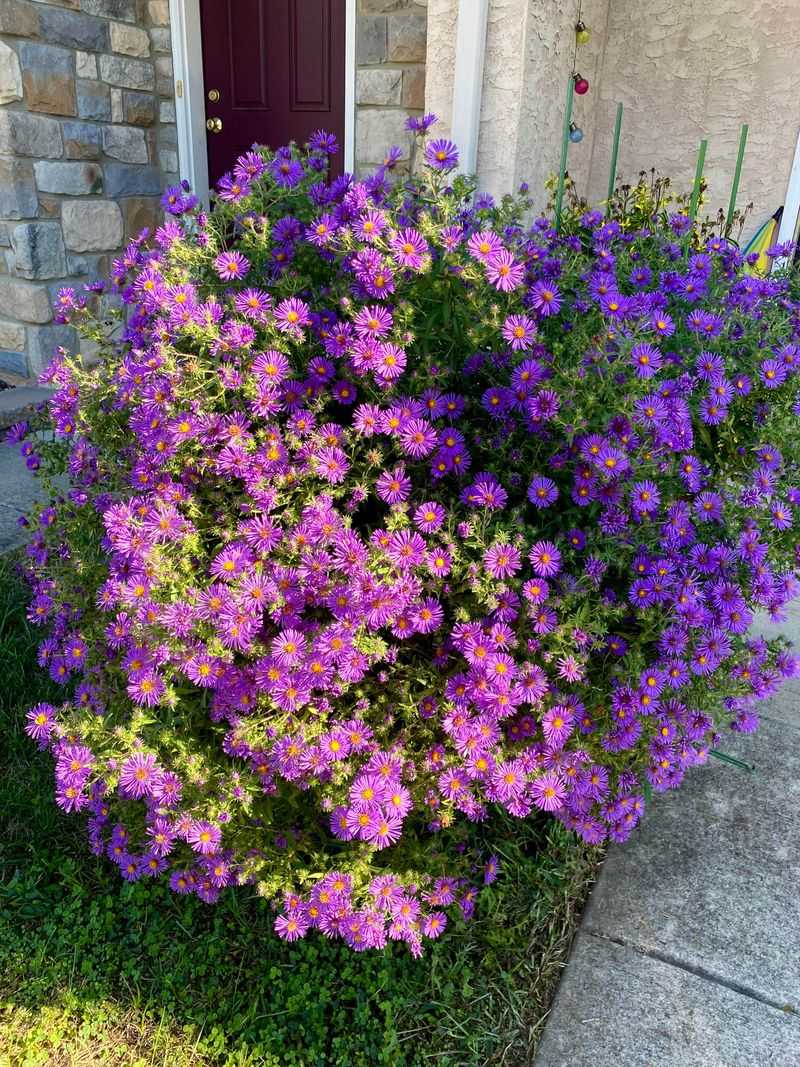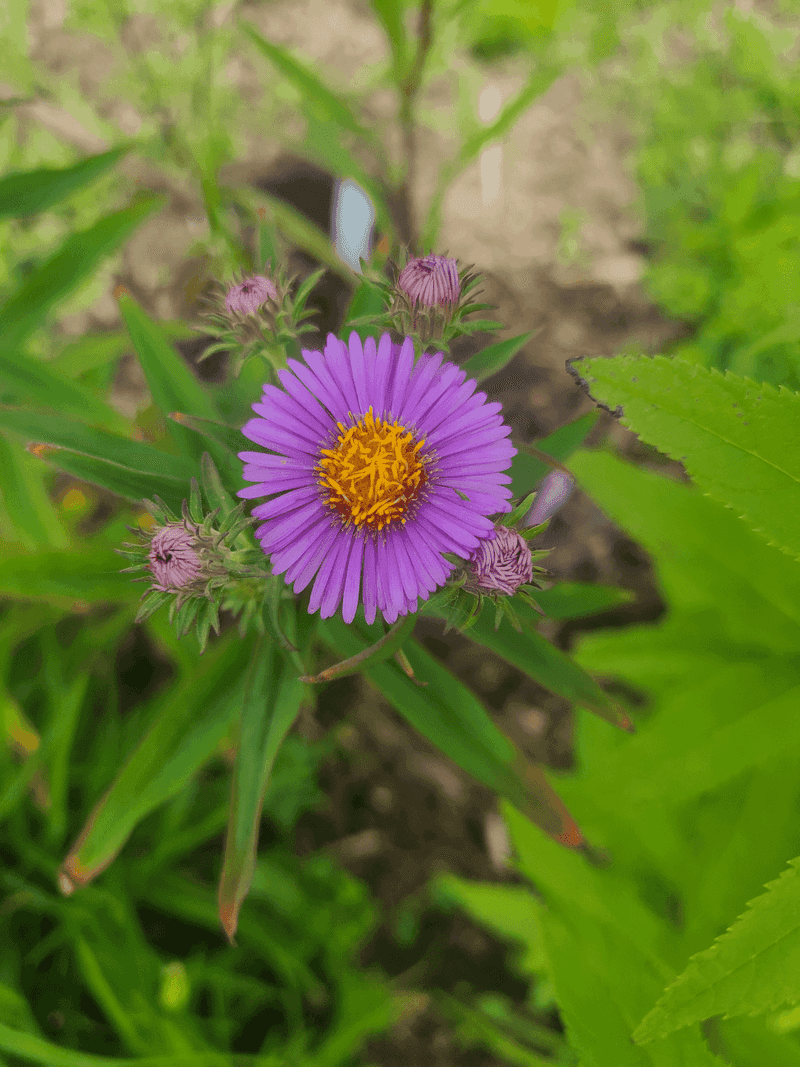In the changing seasons of Massachusetts, gardens shift, fade, and settle into quieter tones. But bees are still busy, and their search for food doesn’t slow down. To help them, gardeners need a bloom that can go the distance, offering color and nectar long after summer flowers fade.
Fortunately, there’s a native that thrives in this exact moment. The one plant bees simply cannot resist is the New England aster.
1. A Late-Season Lifeline For Hungry Pollinators
Most flowers finish blooming by late summer, leaving bees scrambling for food sources. New England asters burst into bloom from August through October, offering nectar and pollen exactly when pollinators need it most.
Honeybees, bumblebees, and native solitary bees flock to these purple blossoms like kids to an ice cream truck. Without this critical food supply, many bee colonies would struggle to build up energy reserves for surviving the cold Massachusetts winter ahead.
2. Purple Petals Pack A Powerful Visual Punch
Picture a sea of violet-purple rays surrounding bright yellow centers, and you have got the signature look of New England asters. Each flower head contains dozens of tiny disk flowers in the middle, circled by showy ray petals that catch every eye.
Growing up to five feet tall, these plants create dramatic splashes of color across fields and gardens. Their vivid hues stand out against autumn’s browns and golds, making them impossible for both humans and pollinators to ignore.
3. Native Roots Run Deep In Massachusetts Soil
Long before European settlers arrived, New England asters thrived throughout Massachusetts and the entire eastern United States. Indigenous peoples knew these plants well, and they evolved alongside local wildlife for thousands of years.
Because they are native, these asters require less water, fewer pesticides, and minimal fussing compared to imported ornamental plants. They already know how to handle New England weather, pests, and soil conditions without needing constant human help or special treatment.
4. Simple Care Makes Gardening A Breeze
Forget complicated gardening routines—New England asters practically take care of themselves once established. Plant them in a sunny spot with decent drainage, and they will reward you with spectacular blooms year after year.
You can divide clumps every few years to create more plants for free, sharing them with neighbors or filling more garden space. A quick trim in early summer keeps plants bushy rather than floppy, though even lazy gardeners get beautiful results without much effort.
5. Wildlife Benefits Extend Beyond Just Bees
While bees get top billing, New England asters host an entire community of beneficial insects and wildlife. Butterflies, including migrating monarchs, stop by for nectar refueling during their long autumn journeys southward.
Beneficial beetles and predatory wasps visit the flowers too, helping control garden pests naturally. Later in winter, goldfinches and other songbirds feast on the dried seed heads, making these plants valuable across multiple seasons for Massachusetts ecosystems and backyard habitats.
6. Climate Resilience Makes Them Future-Proof
As weather patterns shift and summers grow hotter and drier, gardeners need plants that can roll with the punches. New England asters tolerate drought once their roots establish, bouncing back from dry spells that would kill weaker species.
They also handle Massachusetts cold snaps without blinking, surviving harsh winters that dip well below freezing. Choosing climate-adapted native plants like these asters means your garden keeps supporting pollinators even as environmental conditions become more unpredictable and challenging.

